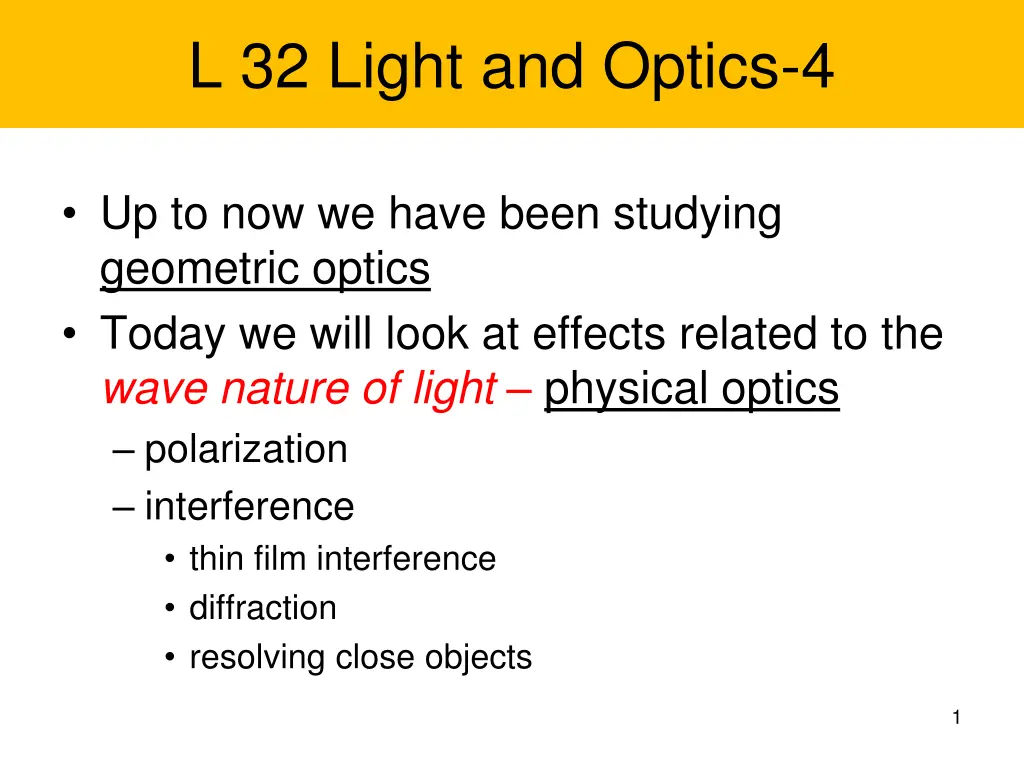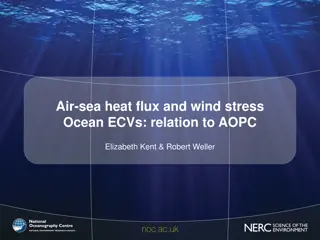
Wave Nature of Light Effects
Explore the wave nature of light effects such as diffraction, polarization, interference, and more in the realm of physical optics. Delve into phenomena like bending of light, polarized light, and examples of everyday interference. Unravel the properties that can only be understood by considering light as a wave.
Uploaded on | 2 Views
Download Presentation

Please find below an Image/Link to download the presentation.
The content on the website is provided AS IS for your information and personal use only. It may not be sold, licensed, or shared on other websites without obtaining consent from the author. If you encounter any issues during the download, it is possible that the publisher has removed the file from their server.
You are allowed to download the files provided on this website for personal or commercial use, subject to the condition that they are used lawfully. All files are the property of their respective owners.
The content on the website is provided AS IS for your information and personal use only. It may not be sold, licensed, or shared on other websites without obtaining consent from the author.
E N D
Presentation Transcript
L 32 Light and Optics-4 Up to now we have been studying geometric optics Today we will look at effects related to the wave nature of light physical optics polarization interference thin film interference diffraction resolving close objects 1
Light rays travel in straight lines Unless: reflection refraction 2
Effects due to the wave nature of light Thus far we have been dealing only with geometrical optics In geometrical optics we deal only with the behavior of light rays it either travels in a straight line or is reflected by a mirror, or bent (refracted) when it travels from one medium into another. However, light is a WAVE, and there are certain properties that can only be understood by taking into account the wave nature of light. 3
Diffraction: bending of light passing through an aperture (hole) A simple shadow of the slit is not observed, because the light spreads out when passing through it. 4
Wave or physical optics We will consider two effects that are related to the wave properties of light polarization interference everyday examples: Polaroid lenses the colors of an oil film Laser passing through a pinhole 5
Polarization x z y Light is an electromagnetic wave with the electric and magnetic field having very specific orientations A light wave in which the electric field always vibrates along one direction is called a linearly polarized wave The direction of polarization is the axis along which the electric field vibrates In the diagram above, the wave polarization is x 7
Polarization-a the direction in which the electric field vibrates is the direction of polarization with polarized light the electric field always vibrates in one direction ordinary light is unpolarized so that the electric field is randomly oriented about the direction of travel Polarized light Un-polarized light 8
Polarization-b a transverse wave is linearly polarized with its vibrations always along one direction a linearly polarized wave can pass through a slit that is parallel to the vibration direction the wave cannot pass through a slit that is perpendicular to the vibration direction 9
Polaroid Sheets a polarizing material (polarizer) will only allow the polarization parallel to its axis to pass through thus, it reduces the light intensity 2 polarizers can be used to control the light intensity Sunglasses made from polarizing material are used to remove glare, light reflected from a surface and tend to be polarized A polarizer with its transmission axis vertical Electric field Vertically polarized light Un-polarized light 10
Polaroid sunglasses When unpolarized light passes successively through 2 polarizers whose axes are oriented 90 degrees to each other, no light will emerge. The first one polarizes the light, and the second one then blocks it. 11
interference of light when two light waves are combined, interference can occur more light intensity or less light intensity reinforcement constructive interference cancellation destructive interference partial cancellation in-between case 12
Spatial Interference A A P B B P Waves leave A and B in phase, but travel different distances to P, and arrive out of phase. P is a dark spot Destructive interference Waves leave A and B in phase, travel the same distance to P, and arrive in phase. P is a bright spot Constructive interference 13
two-slit interference Each slit of the double slit acts as a new source of light. Light waves from the two sources then interfere constructively in places producing the bright fringes, while in other places they interfere destructively producing dark fringes. 14
thin film interference Ray 1 is reflected from the oil surface. Ray 2 is the ray resulting from refraction at the gasoline/ water surface. Since the rays travel different paths, they interfere when combined. Different wavelengths interfere at different places the produces COLORS 1 2 oil water 15
Interference from a CD Whenever light bounces off a surface having a regular array of grooves (like a CD) interference occurs. An optical device that uses this effect is called a diffraction grating. 17
Diffraction An important interference effect is the spreading of light as it passes through a narrow opening. without diffraction, light passing through a narrow slit would just produce a shadow effect. The effect of diffraction is to cause the light to spread out around the edges of the slit 18
D I F F R A C T I O N 19
diffraction of sound the diffraction of sound waves explains why we can hear sound around corners diffraction of sound around the head makes hearers misjudge the location of sound sources 20
A diffraction grating Incident light Bright spots grating 21
Light passing through a pinhole A pattern of concentric bright rings and dark rings is formed called interference fringes. 22
Diffraction effects Barely resolved Diffraction limits our ability to distinguish closely spaced objects because it causes the images to overlap Diffraction limits the size of an object on the ground that can be photographed from a satellite 23
Lord Rayleigh established a criterion for objects to be barely resolved 24
Diffraction affects the resolution of close objects The automobile headlights were photographed from various distances from the camera. camera close to car camera far from car 25






















